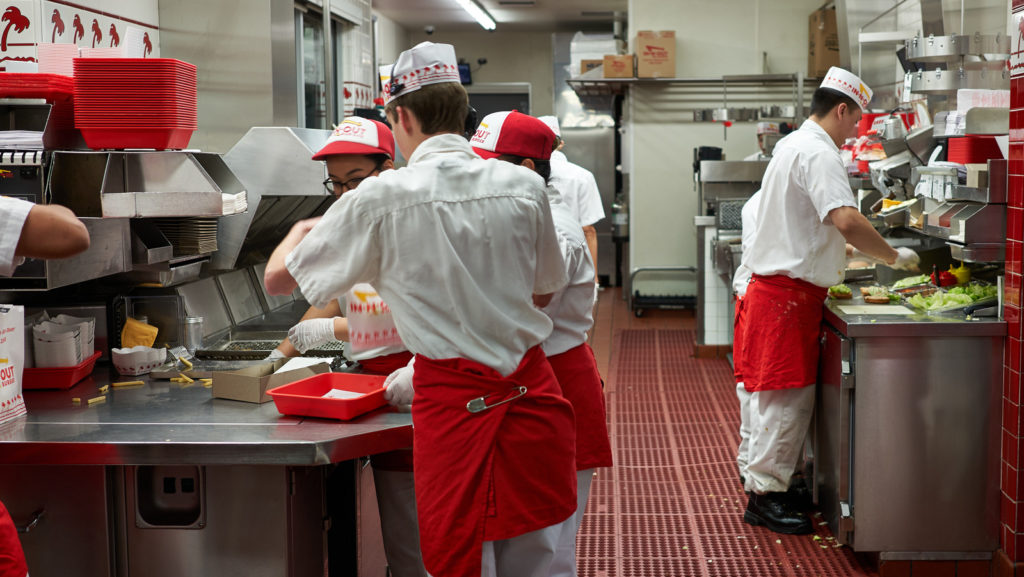The COVID-19 Pandemic has pushed many of us out of our jobs. It’s forced many of us to even rethink the jobs that we were able to keep. Some of us have participated in what people are calling “The Great Resignation.” While many others have sought to improve their work-life balance through “Quiet-Quitting.”
Nowadays, with Inflation and a possible Recession on everyone’s mind, many think that it may be best to just keep your job and ride it out. Others see this time of uncertainty as a time of opportunity to switch fields and possibly even level up your career.
“It’s an unusual job environment with the economy under pressure, with higher interest rates and higher inflation and with a tight labor market,” said Nancy Vanden Houten, lead U.S. economist with Oxford Economics.
California’s unemployment rate is at its lowest point in more than two decades. Workers are in short supply all over the economy. But this could quickly take a turn for the worst if the Federal Reserve keeps increasing interest rates.
Based on state employment studies and interviews with economists and academic scholars, jobs are expected to continue growing over the next decade. These are the highest in-demand jobs with the highest pay and the lowest entry-level skills required.

Leisure and hospitality workers: This category includes cashiers and staffers at hotels, restaurants and theme parks. In California, leisure and hospitality had the largest job loss of any sector in the early pandemic: 990,200 jobs vanished from February to April 2020, or 1 out of every 3, according to the state Employment Development Department. Although the sector has recovered about 85% of those lost jobs, the state still expects leisure and hospitality to be the biggest creator of jobs over the next year.
The challenges: Demand can be seasonal and the median annual wages are about $32,000 — a level many workers find insufficient to afford housing and transportation in Los Angeles. Union leaders such as Kurt Petersen, co-president of Unite Here Local 11, which represents 32,000 hotels, restaurants, airports and sports arenas in Southern California, are trying to boost that by organizing workers. “I’m optimistic that these jobs can sustain a family,” he said. “I think it will take a lot of work.”

Fast-food workers: Because we love to eat on the run, the demand for fast-food cooks and counter workers continues to grow, with the EDD forecasting 243,000 openings being filled between 2021 and 2023.
The challenges: The industry has a notoriously high turnover rate, partly explaining why there are so many openings. These are often minimum-wage jobs — paying a median annual salary of $32,000. Gov. Gavin Newsom signed legislation on Labor Day to create a panel of appointees empowered to set minimum standards for wages, hours and working conditions for fast-food workers in California. But opponents filed for a referendum, seeking to block it until the matter can be put before voters.

Warehouse workers: The continuing growth of e-commerce is putting pressure on warehouse operators to ship more orders. Warehouse construction has surged in the Inland Empire, among other areas of the state. The annual wages for warehouse workers range from $33,000 to $48,000, depending on duties and position. The number of transportation and warehouse jobs in the Inland Empire has jumped nearly 40% since February 2020, according to a study by the UC Riverside School of Business. “Those jobs can provide a path to raise a family and buy a house,” said Robert C. Lapsley, president of the California Business Roundtable. “They are critically important to California’s future.”
The challenges: The pace of work in warehouse jobs can be unrelenting, which is why California adopted a law last year requiring warehouse employers such as Amazon to disclose productivity quotas for workers.

Truck drivers and heavy machine operators: The e-commerce boom has also meant a surge in demand for truckers and other logistics workers. More than 14,000 job ads for truck drivers and heavy machine operators were posted in the 60 days leading up to Aug. 7, according to the EDD. Truck drivers can work on either short-haul or long-haul routes, moving cargo from a port or delivering packages in residential areas, said Matt Schrap, chief executive of the Harbor Trucking Assn. “It’s hard work but it’s good blue-collar work,” he said, noting that many companies offer apprenticeships to learn the needed skills.
The challenges: The jobs can be physically demanding and often long hours. The median annual salary in California is about $51,000.

Green energy workers: The Inflation Reduction Act signed into law last month by President Biden created billions of dollars worth of tax credits for companies that make electric cars, rooftop solar panels and wind turbines, and incentives for the people who buy them. The legislation could create at least 1.5 million jobs nationwide by 2030, primarily in the manufacturing industry, according to a study by Energy Innovation Policy & Technology, a non-partisan energy and climate policy think tank. “I think that creating a more sustainable economy creates good-paying jobs for workers who already have those skills,” said Enrique Lopezlira, a labor economist at the UC Berkeley Center for Labor Research and Education. According to the EDD, an electrician working in California’s green energy sector can earn a median salary of about $73,000 a year.
The challenges: Much of this work, such as installing rooftop solar panels and working on wind turbines, is physically demanding and risky. The Bureau of Labor Statistics rated wind turbine technicians as having one of the highest rates of injuries and illnesses among all occupations.

Software developers: As businesses and organizations turn to new technologies to maximize the efficiency of their computer systems, the demand for software developers will continue to grow, according to the EDD and academics. Businesses in California were projected by the EDD to need more than 72,000 software developers between 2021 and 2023.
The challenges: Developers often must work evenings and weekends to meet deadlines or troubleshoot problems, and although the pay can be good — salaries range from $80,000 to $128,000 a year for a developer with more than ten years of experience, according to Indeed.com — there’s a lot of variabilities. “Even if you get to be a software engineer or a developer, that doesn’t automatically mean higher pay,” Lopezlira said. “Within companies, there is a great disparity in pay.”
